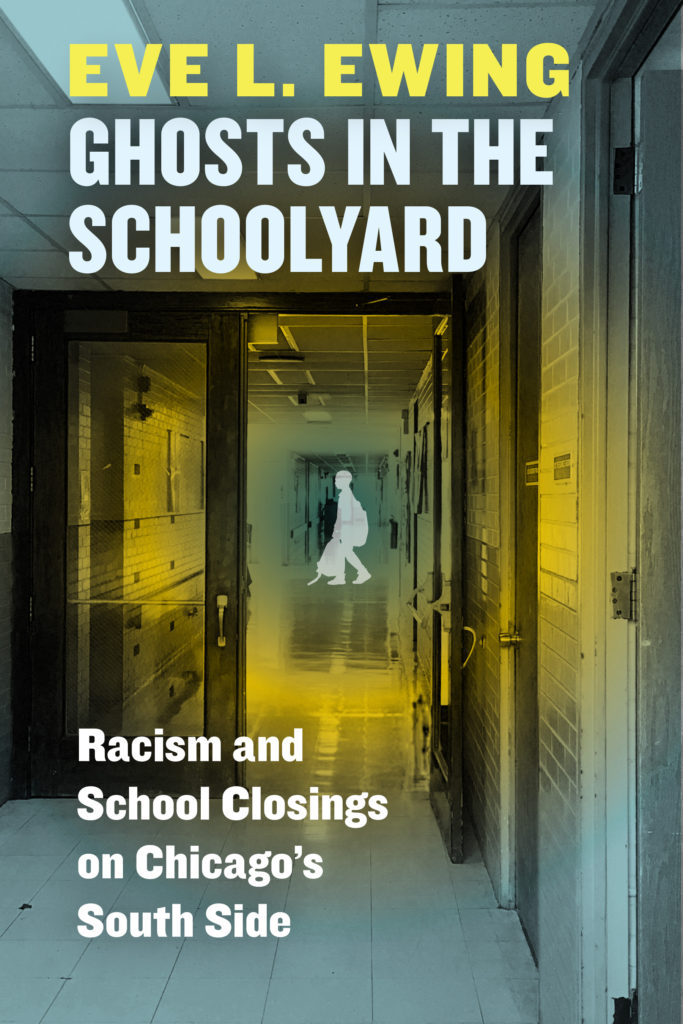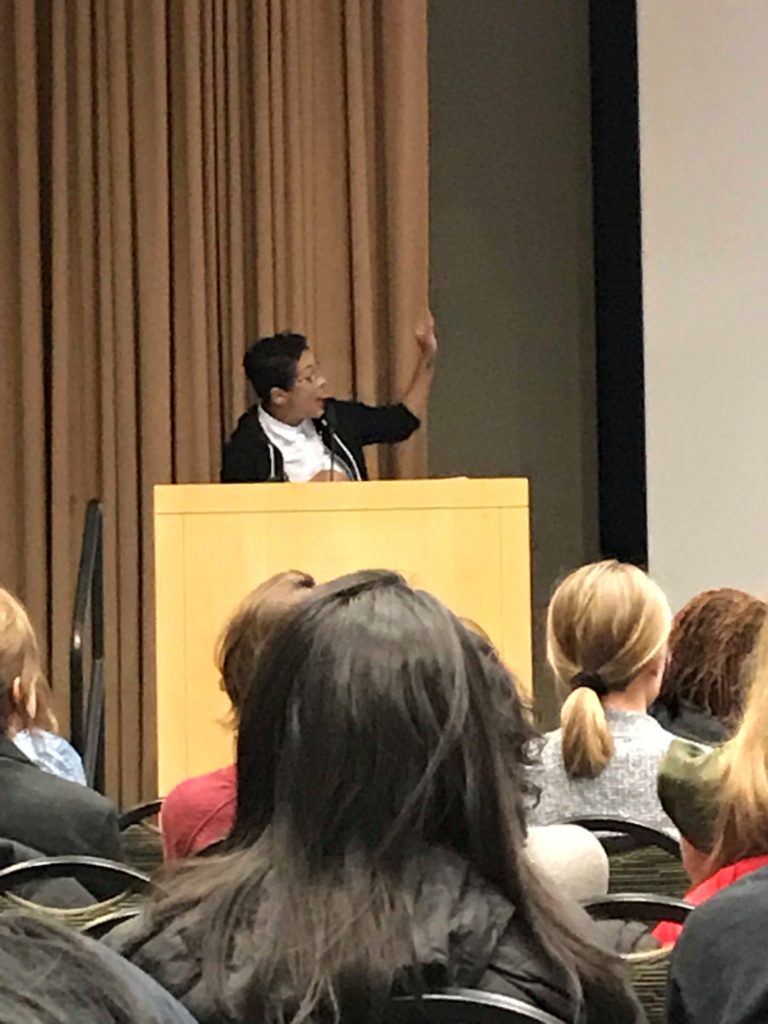In 2013, the board of education of the Chicago Public Schools succeeded in closing 50 neighborhood schools, an action fully supported by Mayor Rahm Emanuel. Of these, 90 percent had a majority of African American students, who comprised 80 percent of students in the closed schools. These, in turn, comprised fully one-fourth of the city’s schools with a majority of both African American students and African American faculty.
Chicago is not a city where people take abuse and discrimination lightly. Predictably, many parents in the affected neighborhoods rose up in civic rebellion. At Dyett High School, they launched a hunger strike to make their feelings known. Protesters succeeded in keeping Dyett open, but overall, little of this had any effect because Chicago has the only unelected school board in the state of Illinois. Instead, courtesy of special state legislation, the mayor appoints the members, who respond to the mayor, not the voters. Recent mayors have liked it that way.
If you imagine that this might be a political issue, you are exactly right. In the mayoral election that just last month culminated with the election of Lori Lightfoot, both she and Cook County Board President Toni Preckwinkle vowed support for creating an elected school board. These two had emerged as the leading vote-getters from a mayoral field of 17 in the nonpartisan primary after Emanuel declined to seek reelection. As with many such things, the details will matter greatly in negotiations with legislators in Springfield, but Lightfoot’s 73 percent mandate unquestionably gives her considerable elbow room in the discussion. But such an outcome of the often harsh and certainly vigorous debate was hardly on the horizon when the closings occurred. So, too, was the explosive controversy over the police murder of Laquan MacDonald in 2014 until court-ordered release of the video exposed the official police explanation of the 17-year-old’s death as highly inaccurate. That set the stage for Emanuel’s exit from City Hall.
But back to the story of the school closings. This set of events helped to poison relations between Emanuel and much of the black community in Chicago even before the MacDonald shooting became the linchpin for relations with the Chicago Police Department. Lightfoot’s claim to fame—and she rose to challenge Emanuel even before he decided not to run—was her role in police administrative reform.

In her new book released last year, Ghosts in the Schoolyard: Racism and School Closings on Chicago’s South Side (University of Chicago Press), Eve L. Ewing, assistant professor in the University of Chicago School of Social Service Administration, tackles the 2013 events to share with us why this was not just a one-off mistake by some misguided board members and school administrators, but part of a long history of institutional racism in the Chicago system. The closings did not happen in a vacuum; there was no blank slate. There was, instead, a powerful legacy of devaluing black students and their neighborhoods that played a significant role in the clash of world views between the powerful and the disempowered.
History matters. Ewing takes time to elucidate the migrations of southern blacks between the world wars to northern cities including Chicago. This was the origin of what has become known as the Bronzeville neighborhood on the South Side. Ewing notes that the black population in Chicago grew 360 percent in just two decades. However, while many other ethnic groups immigrating to Chicago developed enclaves by choice, blacks were forced to do so through a segregation enforced not by law, but by bombings and violence. Blacks attempting to move into white neighborhoods faced serious retribution. From 1917 to 1921, she notes, 58 bombs “struck the homes of black residents, of bankers who gave the mortgages, or of real estate agents who sold them property.” This was an average of one bombing every 20 days. It is not hard to imagine how this produced an intimidating effect for all concerned. The result was a ghetto in which blacks were confined in increasingly dense concentrations, eventually culminating in the infamous housing projects that lined the major corridors of the South Side. But we get ahead of ourselves here. In order to squeeze growing numbers of the southern arrivals into the same housing stock in a geographically confined area, landlords began to carve up existing units into ever smaller ones that came to be known as “kitchenettes,” often violating building codes and safety standards. Gwendolyn Brooks, the famous African-American poet laureate of Illinois, memorialized these housing atrocities in her poem, “Kitchenette Building.”

That, in turn, led to overcrowded schools in the affected neighborhoods, accompanied by the morally constipated unwillingness of powerful school officials to consider integrating schools or allocating substantial resources to those neighborhoods to allow their schools to work. Instead, Superintendent Benjamin Willis took over in 1953, in an era when schools did not systematically collect racial data and he could somewhat disingenuously proclaim himself color-blind. As Ewing observes, “Local black leaders were not convinced.” This was, after all, also the time of the Brown v. Board of Education decision, in which the United States Supreme Court ordered desegregation of public schools and overturned the philosophy of “separate but equal.” In time, Willis implemented a policy that placed black students in overcrowded schools in temporary aluminum auxiliary trailers that were soon derided as “Willis wagons,” while students attended for half-days while the affected schools ran double shifts.
By 1961, Ewing states, “tensions were flaring,” and a coalition of civil rights groups undertook efforts to enroll black students in white schools, where they were turned away despite vacancies. Operation Transfer served to expose the inherent discrimination in the system. Other forms of direct action followed, including black mothers visiting white schools to document open spaces (they were arrested for trespassing), and lying down in front of bulldozers preparing the ground for more trailers. Finally, the stage was set for a mass walkout on October 22, 1963, “Freedom Day,” in which more than 220,000 students boycotted school.
In short, the protests of 2013 had plenty of precedent, and the closings struck black parents not as an attempt to improve the education of their children—in areas losing population largely as a result of the demolition of the same public housing that once confined them—but as the destruction of families and networks that had grown in those neighborhoods over time. The full story is more complex and richly textured, but you begin to get the idea. Yet, the denial of this impact of history, and the insistence that new policies under Emanuel were somehow part of a clean slate to give disadvantaged students a fresh start, even as many had to cross gang lines and lost their lives to gun violence as they attended newly assigned schools, persisted.
That brings us to Barbara Byrd-Bennett, a black school superintendent chosen by Emanuel, who led the school closings. The fact that she was later convicted and imprisoned for taking kickbacks from a former employer and CPS contractor, escapes only those who suffer from a deprived sense of irony. Confronted at a public meeting with accusations of racism that touched a raw nerve, she reacted: “What I cannot understand, and will not accept, is that the proposals I am offering are racist. That is an affront to me as a woman of color.”
Ewing goes on, after quoting Byrd-Bennett at greater length, not only to examine the personal umbrage that Byrd-Bennett expressed, but the larger context of institutional racism, and the underlying question of why the schools in question were “underutilized” and “under-resourced” in the first place. After all, someone had made critical decisions to reallocate resources to charter schools and away from the very schools that were now being criticized for underperforming despite the clear history of policies that had helped make them so. The feeling of betrayal among parents and students in the schools facing closure was palpable, and the emotional commitment that led to a hunger strike was real. The fact that, yet again, the system found a way to turn a deaf ear to those who pleaded with the board to reconsider its approach spoke volumes about where power resided. There were numerous factors that led to this year’s election outcome, which also produced a growing progressive caucus in the City Council, but these battles over schools were surely among them.
The richness of Ewing’s book is much deeper than I can portray here, so I urge those interested in the topic to read it. Chicago is not alone in facing serious issues concerning the future of its public schools and fairness in the distribution of educational resources, so this book is not just for Chicago. It is for America.
Now, time for full disclosure: First, I was on a panel of three judges for the Society of Midland Authors that chose this book for honorable mention in adult nonfiction in our annual book awards context. That award will be bestowed at a banquet on May 14. Second, my wife is a retired Chicago Public Schools teacher and Chicago Teachers Union activist who wrote about the Dyett hunger strike and other actions against the school closings at the time they were happening. Her concern for students is not abstract and policy-driven but visceral and personal after decades in the classroom. There are many opinions about education policy in Chicago, but after three decades in the classroom, she has earned a right to hers.
Jim Schwab
Trackbacks/Pingbacks